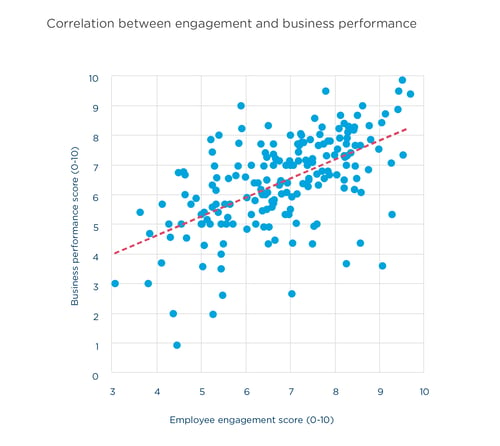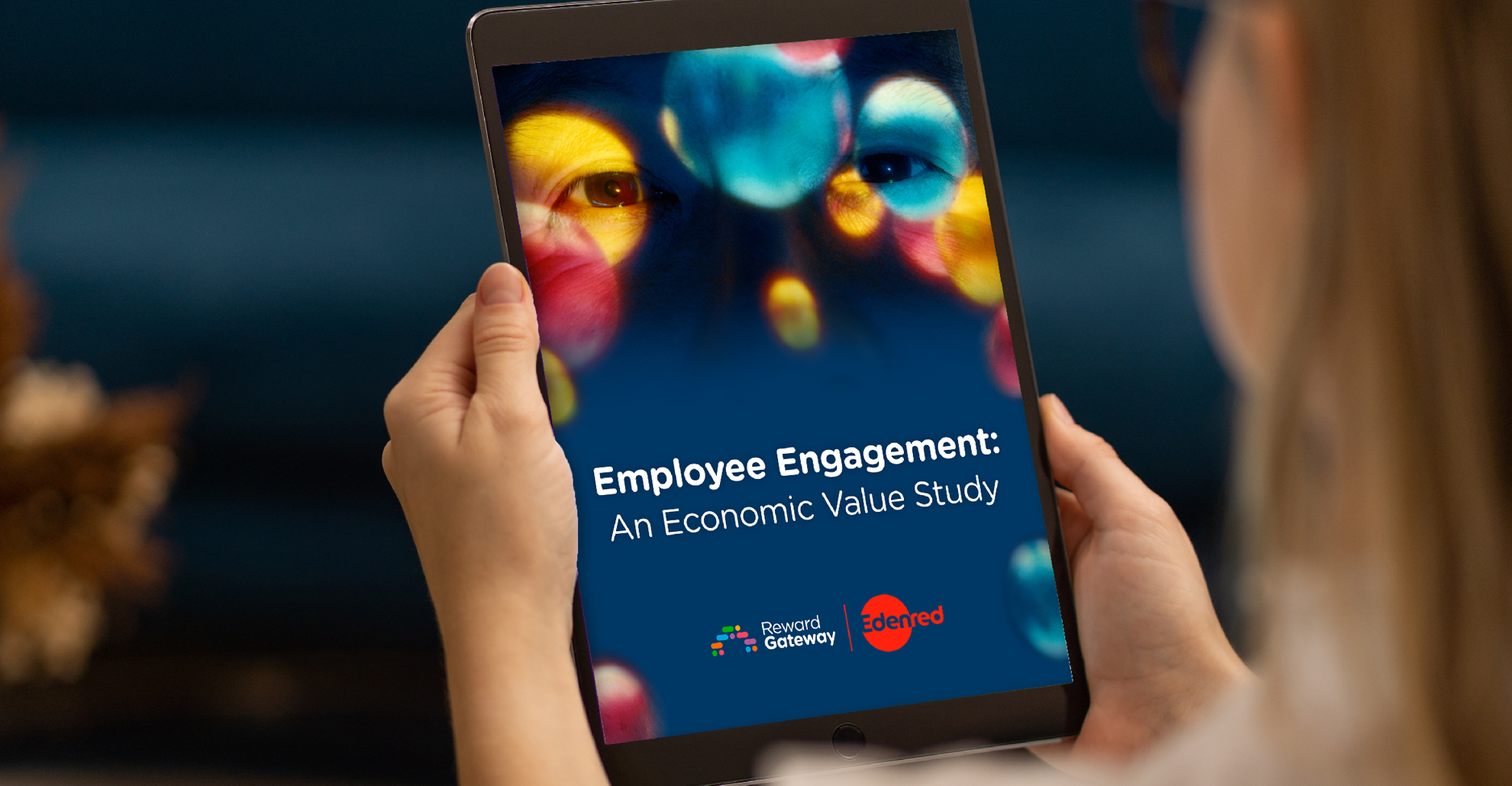Fuelled by our latest and most insightful research yet, our latest report, Employee Engagement: An Economic Value Study, has helped prove a direct correlation between successful employee engagement initiatives and positive business results.
It’s a fascinating look into the relationship between employee engagement and business results. Research was conducted by interviewing more than 300 of the world’s leading organisations regarding their employee engagement initiatives, HR practices and business results. As a result, the Economic Value Study was created to help highlight the fact that when companies cultivate an environment where employees are engaged with their organisation, empowered to be their true selves and appreciated for who they are, they are also significantly more likely to contribute to improved business performance.
So, what does the study reveal? We’d highly recommend reading the full report to receive all the insight, but here we’ve picked out some of the key points to digest.
An engaged workforce will drive business success
People who feel connected to their work, and part of an organisation’s ‘mission’ will inevitably work harder and smarter. In our study we found a concrete link between employee engagement and positive business outcomes.
Of course, you can’t simply force your team to become more engaged with their work. Workforce dynamics change all the time, particularly between generations, so businesses need to constantly be re-evaluating how they engage with their workforce. And of course this differs entirely by industry, company size and working style. Read on to learn about one of the key workforce differences you need to consider.
Different strategies are required for Desk-based and Frontline workforces
Each organisation is different, so HR teams need to spend time getting to know their workforce and understand what challenges they face and desires they have, in order to provide the best-possible benefits package.
However, there are two distinct types of organisations that it always pays to handle differently: ‘Frontline organisations’, where the majority of staff are in offsite or non-desk-based roles, and ‘Desk-based organisations’, where the majority of staff are office-based. Engaging with each of these audiences requires a distinct, unique approach and set of tactics.
Frontline workforces tend to work on projects more geared towards organisational success, and as a result will often be more engaged than their desk-based counterparts.
On the other hand, our study found that desk-based workers often have higher expectations of benefits packages, and a higher sense of their own value, meaning it can be harder to keep them engaged.
Just being aware of these differences between the two organisation types can have a huge impact on your benefits packages and how you approach your employees to keep them engaged.
The four key benefit personas uncovered by our study
 During the study we saw a number of distinct categories emerge. Most of the companies we looked at fell into one of four segments, which showed us the different approaches they had to their benefits and engagement offering. They were:
During the study we saw a number of distinct categories emerge. Most of the companies we looked at fell into one of four segments, which showed us the different approaches they had to their benefits and engagement offering. They were:
-
Leaders: These organisations managed to achieve positive outcomes for both their employees and their business with a well-placed benefits package. As a result they have the lowest turnover rate, lowest time-to-hire and the highest customer NPS (net promoter score). They also typically saw a 5-7% higher business performance than any other segment. If it isn’t clear – these businesses are the role models!
-
Appeasers: These organisations provide benefits and see a nice bump in engagement, but not as much improvement in business results as Leaders.
-
Drivers: This is an interesting segment. Drivers provide fewer benefits, and experience a low engagement rate, but still manage to achieve an improvement in business results.
-
Low Performers: Unfortunately these organisations (of which there aren’t many) miss on both fronts. They see low engagement and minimal business improvements. Chances are they are struggling with significant issues beyond employee engagement.
How does a business become a leader?
Research revealed that for companies to see the best results and enable their employees to feel appreciated, they should consider selecting benefits that support all levels of employee needs. This can range from physiological needs, such as food vouchers or discounts at their favourite shops, to the need for belonging, meaning recognition schemes that notice and reward good work.
Further to this, our study found that in many cases HR leaders are not always seeing the value of HR strategies that actually drive engagement. An example here would be the employee recognition programmes mentioned above. HR professionals might ask themselves, ‘why do we need this’. People are just doing their job, which they are paid to do, right?
That way of thinking is quickly becoming outdated. A programme that recognises and rewards hard work, whether top-down or peer-to-peer, can have a huge impact on employee morale and engagement. These engaged employees will then continue to overperform, bringing good results to the business.
Communication is key
In the days of remote working and Zoom meetings, communication priorities seem to have taken a serious (and damaging) hit. In fact, only 12% of the organisations we spoke to said communications is one of the top three HR priorities. Cultivating an engaged workforce stems from establishing open lines of trust and transparent communication between employers and their employees, which makes this low number all the more alarming.
Employers need to be aware that clear and consistent communication, particularly sharing the organisational mission and the reasoning behind major decisions, is incredibly important when fostering an engaged workforce. People want to feel like they’re part of the bigger picture, not just a cog in the machine.
At a more basic level, communication is important when it comes to letting staff know about the benefits available to them. What good is a Cycle to Work scheme if no one knows about it?
To discover more valuable insights into the correlation between employee engagement and business outcomes, download our full report.
Or why not go one step further and participate in our survey? You’ll not only contribute to our groundbreaking research, but can also see where your company stacks up in the world of employee engagement and identify opportunities for the growth of both your company and its people.

 Nebel Crowhurst
Nebel Crowhurst

.png)

